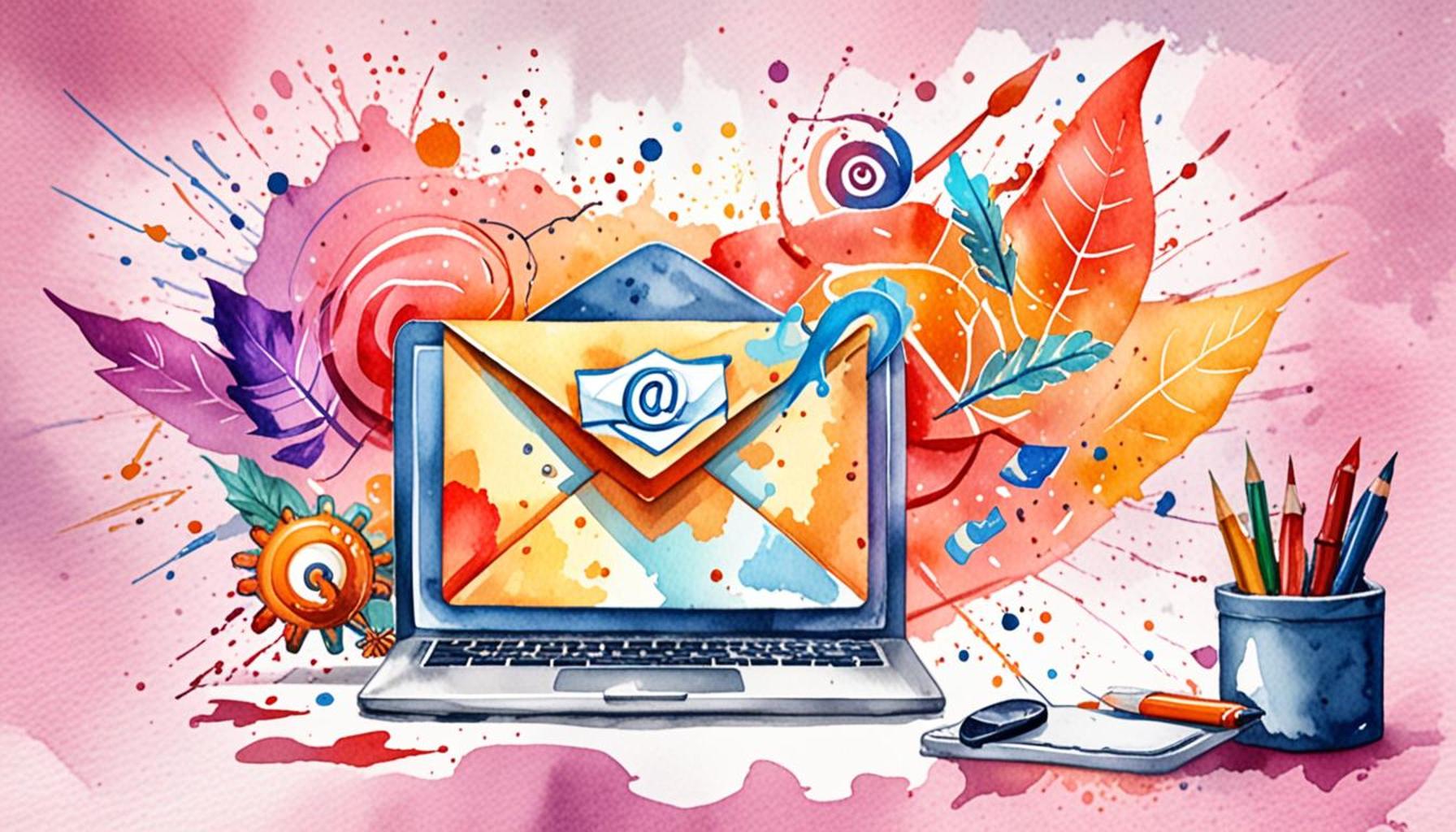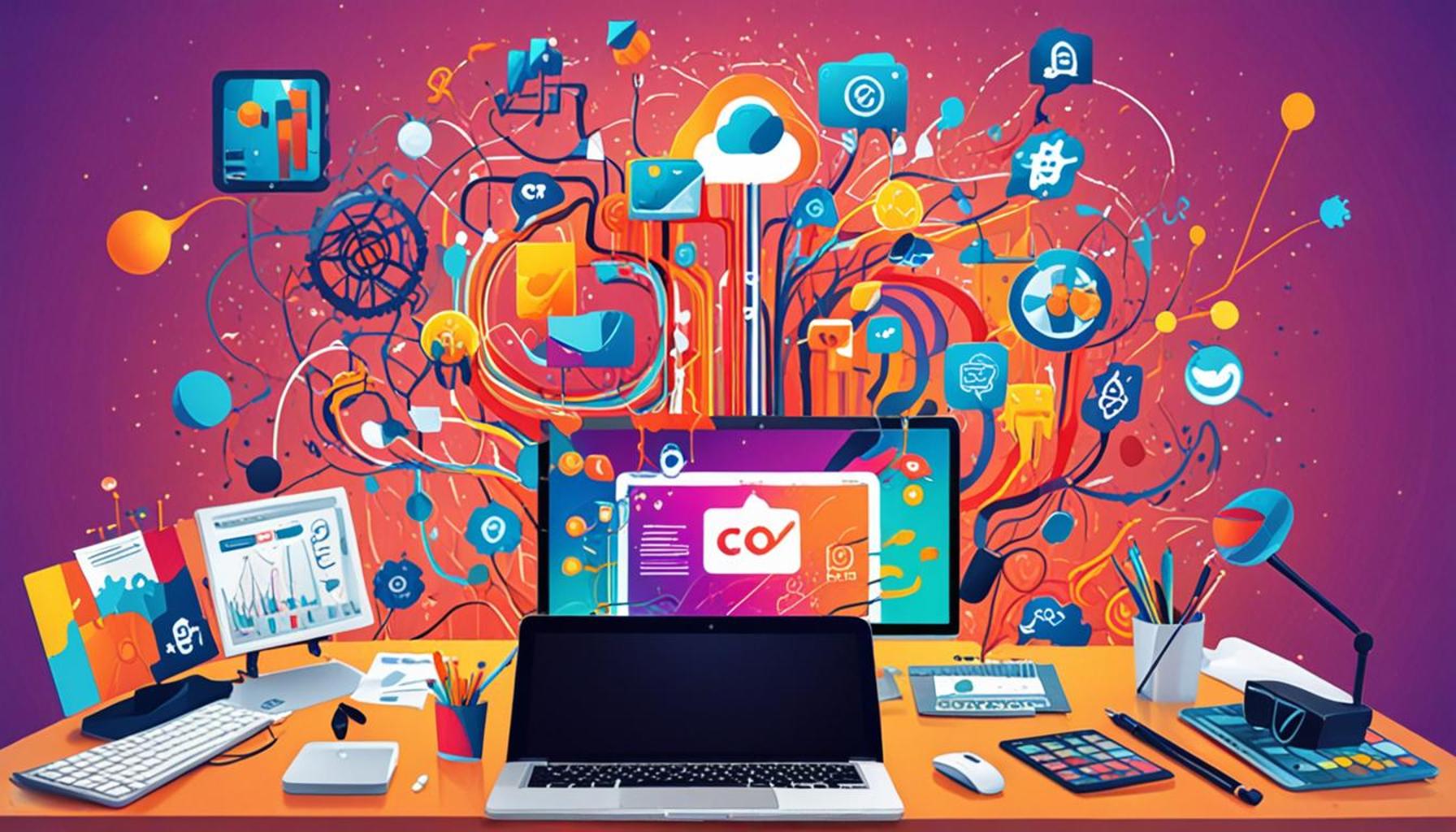Email Marketing and Automation: Strategies to Maximize Results

The Dynamics and Benefits of Email Marketing
With the digital landscape evolving rapidly, businesses must leverage every possible channel to connect with their customers. One of the most potent avenues available is email marketing, a channel boasting an impressive 4 billion email users globally. This vast user base presents an unparalleled opportunity for brands to engage directly with their audiences. However, to truly harness this power, companies must adopt well-defined strategies that not only capture attention but also foster lasting relationships.
The effectiveness of email marketing lies in its numerous advantages. For starters, it is remarkably cost-effective. Traditional advertising methods, such as print or television, can be prohibitively expensive, while email campaigns can often be executed with minimal financial outlay. According to the Direct Marketing Association, businesses can expect an average ROI of approximately $42 for every $1 spent on email marketing. This statistic alone exemplifies why email should be a critical component of any marketing strategy.
Moreover, email marketing allows for targeted messaging, enabling businesses to segment their audiences based on various factors like demographics, purchase history, or engagement level. For instance, a clothing retailer could create personalized campaigns tailored to different customer segments, such as sending exclusive promotions for summer attire to subscribers who have previously shown interest in seasonal collections. Such precision not only increases the likelihood of conversions but also enhances customer satisfaction.
In addition to these benefits, email marketing facilitates improved engagement. Automated follow-up emails, for instance, can be triggered to boost open and click-through rates significantly. A welcome email series that introduces new subscribers to a brand’s story and offerings can lead to a robust initial engagement, setting the stage for future interactions.
Strategies for Maximizing Email Marketing Success
To truly capitalize on these advantages, effective automation is paramount. Utilizing automation tools can simplify daunting tasks, ultimately enhancing operational efficiency. Personalization is a cornerstone of this approach; by analyzing customer data, businesses can craft messages that feel remarkably individualized. This can be as simple as addressing the recipient by name or as complex as recommending products based on previous purchases.
Triggered campaigns are another powerful tactic. By automatically sending out emails based on user actions—such as cart abandonment or browsing history—businesses can engage customers at critical moments. For example, if a customer adds an item to their cart but does not complete the purchase, a well-timed reminder email can effectively encourage them to finalize their order.
Additionally, implementing A/B testing allows marketers to optimize their campaigns continuously. By experimenting with different subject lines, email layouts, and content, companies can gain valuable insights into what resonates with their audience, leading to improved performance over time.
In conclusion, to unlock the potential of email marketing, businesses must not only reach their audience but connect with them on a deeper level. By embracing targeted strategies, personalization, and the power of automation, brands can navigate this dynamic landscape successfully, forging lasting relationships that drive enduring growth. As businesses evolve, so too must their approach to email marketing—creating communications that are not only informative but also engaging, relevant, and impactful.
SEE ALSO: Click here to read another article
Maximizing Impact Through Effective Email Strategies
Email marketing is not just about sending a message in the hopes of making a sale; it’s about building a connection with potential customers through engaging, relevant content. To set the pace for this connection, businesses must implement strategic methods that deepen engagement and drive conversions. These strategies can not only enhance the effectiveness of email marketing campaigns but also ensure they yield maximum results.
First and foremost, understanding the target audience is key. Segmentation allows businesses to categorize their audience into distinct groups based on various criteria, such as location, behavior, or interests. By doing so, marketers can tailor their messages to fit the specific needs and preferences of each segment. For example, a tech company might segment its audience into gamers, professionals, and educational clients, sending targeted updates that appeal to each group’s unique interests. This personalized approach significantly enhances engagement rates compared to generic messaging.
Another pivotal strategy to consider is the crafting of compelling subject lines. The subject line is the first interaction the recipient has with the email, and it can make or break the open rate. A/B testing different subject lines to see which ones yield better engagement can provide valuable insights. Some effective types of subject lines include:
- Question-based: Encourages curiosity (e.g., “Are You Ready to Upgrade Your Tech?”)
- Urgency-driven: Instilling a fear of missing out (e.g., “Sale Ends Tonight—Don’t Miss Out!”)
- Personalized: Incorporating the recipient’s name or previous purchase (e.g., “John, We Think You’ll Love This!”)
Furthermore, optimizing the email’s content itself is essential. This includes utilizing clear calls-to-action (CTAs) that guide readers on the next steps, whether it’s making a purchase, signing up for a webinar, or downloading a resource. The placement, design, and wording of these CTAs should be strategically considered to maximize click-through rates. Often, using action-oriented, urgent language—such as “Grab Your Discount Now!”—can prompt quicker consumer responses.
Mobile optimization is additionally a critical element in email marketing. With over 53% of emails being opened on mobile devices according to recent studies, businesses must ensure their messages are mobile-friendly. Clear visuals, concise text, and clickable buttons enhance the user experience and keep readers engaged, no matter the device they’re using.
In conclusion, leveraging these strategies—audience segmentation, engaging subject lines, clear CTAs, and mobile optimization—can significantly enhance the performance of email marketing campaigns. By focusing on how to best connect with consumers, businesses can transform standard email activities into powerful tools that deliver impressive results and foster lasting relationships.
Email Marketing and Automation: Strategies to Maximize Results
In today’s digital landscape, email marketing stands as a powerhouse for businesses seeking to engage customers effectively. However, to truly maximize results, one must employ strategic approaches tailored to target audiences and leverage automation tools. Below is an insightful table highlighting some of the key benefits of incorporating email marketing strategies and automation in your marketing plans:
| Category | Description |
|---|---|
| Personalization | Utilizes subscriber data to craft customized emails, significantly increasing open rates. |
| Segmentation | Allows businesses to categorize audiences based on behavior and demographics for targeted messaging. |
| Automation | Saves time by automating follow-ups, nurturing leads, and sending tailored content based on user actions. |
| Analytics | Provides insight into campaign performance and user engagement, making iterative improvements feasible. |
The above elements are pivotal in forming a robust email marketing strategy. By adopting these strategies, companies can construct not only a responsive approach but also foster deeper connections with their audiences. Embracing automation tools leads to an overall streamlined process, enriching the customer journey while driving measurable results.
Exploring further, consider leveraging A/B testing to refine messaging, ensuring your communications resonate well. Additionally, integrating social sharing into campaigns can amplify outreach, hence transforming existing clients into brand advocates. Engage and captivate your audience with every email sent, thus paving the way for enhanced success in your marketing endeavors.
CHECK OUT: Click here to explore more
Leveraging Automation for Enhanced Efficiency and Engagement
As email marketing evolves, the integration of automation emerges as a game changer, empowering businesses to streamline their marketing efforts while simultaneously delivering personalized experiences to their customers. Effective automation ensures timely communications that resonate with the audience, thus amplifying overall results.
One of the most effective methods within email automation is the use of drip campaigns. These campaigns deliver a series of pre-scheduled emails over time to nurture leads and guide them through the sales funnel. For instance, a newly subscribed user might receive a welcome email immediately, followed by a series of educational content about the product or service over the next few days. This gentle push, created with thoughtful timing, has been shown to increase customer engagement and conversion rates by up to 300% compared to non-automated campaigns.
Furthermore, implementing triggered emails can significantly enhance customer interaction. These emails are sent in response to specific actions taken by the user, such as cart abandonment or browsing behavior. With 70% of e-commerce shopping carts left abandoned, brands that automatically send a follow-up email with reminders and incentives are likely to recapture valuable sales opportunities. Simple yet effective, such emails can yield as much as a 10% conversion rate on average, making them a cornerstone strategy for retailers and service providers alike.
Additionally, the use of customer feedback surveys can be automated, creating opportunities for brands to connect with their audience while obtaining crucial insights about their products or services. By sending periodic satisfaction surveys post-purchase or following user engagement, businesses can gather invaluable feedback that informs future campaigns and product improvements. This not only demonstrates to customers that their opinions matter but also enhances brand loyalty, resulting in repeat business and long-term relationships.
Moreover, another critical aspect of email automation is the integration of analytics and reporting tools. Utilizing platforms that offer advanced metrics allows marketers to track user engagement, open rates, click rates, and conversions in real time. The insights gained from these analytics can inform future email strategies, helping marketers pivot and adapt their approach based on what works and what doesn’t. According to studies, segmented and targeted emails can improve ROI by 760%, showcasing how data-driven decisions fueled by analytics can substantially elevate campaign effectiveness.
Lastly, personalization is a key element in automation that cannot be overlooked. Customers today expect tailored experiences that resonate with their preferences and past behaviors. Tools that allow for personalized subject lines, content recommendations, and dynamic email templates achieve greater customer satisfaction. When recipients see their name in the subject line or receive product suggestions based on previous purchases, they are far more likely to engage. In fact, personalized email content can lead to an increase in transaction rates of up to 6 times as compared to non-personalized approaches.
Incorporating these automated strategies not only enhances the efficiency of email marketing campaigns but does so while maintaining a personalized touch that is crucial in today’s market. By harnessing the power of automation, businesses can create a consistent and engaging customer journey that maximizes conversions and fosters lasting relationships.
YOU MAY ALSO LIKE: Read read another article
Conclusion: Unlocking the Full Potential of Email Marketing
As we have explored throughout this article, the synergy of email marketing and automation offers remarkable opportunities for businesses aiming to maximize their marketing results. Leveraging strategies such as drip campaigns and triggered emails not only improves engagement but also significantly boosts conversion rates. In a fast-paced digital landscape, brands that adapt to automated processes are better positioned to connect meaningfully with their audience, catering to their individual preferences and behaviors.
The necessity for customer feedback surveys further emphasizes the importance of an ongoing dialogue between brands and consumers. By actively seeking feedback and integrating it into future strategies, businesses can enhance their product offerings and build lifelong customer loyalty. Additionally, data-driven insights gathered from analytics empower marketers to refine their approaches continually, proving that informed decisions yield lucrative returns—by as much as 760% in some instances.
Ultimately, embracing the automation of email marketing is not just a trend; it is a crucial strategy for survival and growth in today’s competitive market. Personalization, timeliness, and efficiency are no longer optional but essential elements of a successful marketing campaign. As businesses continue to navigate this dynamic landscape, those who harness the full power of these advanced techniques will stand out, cultivate deeper relationships with their customers, and drive impressive results. The journey towards maximizing email marketing effectiveness starts with a commitment to innovation, automation, and a relentless focus on consumer engagement.



